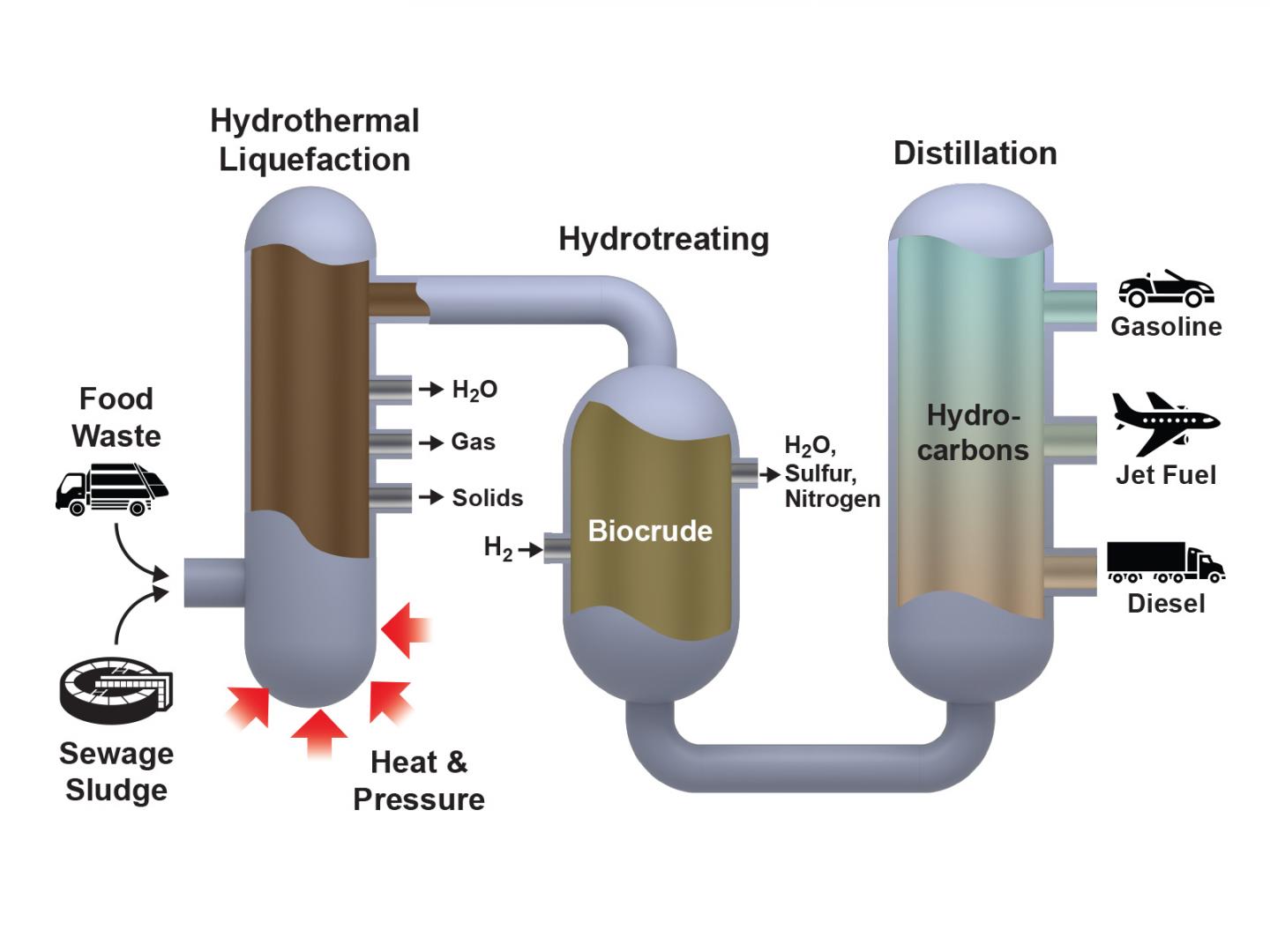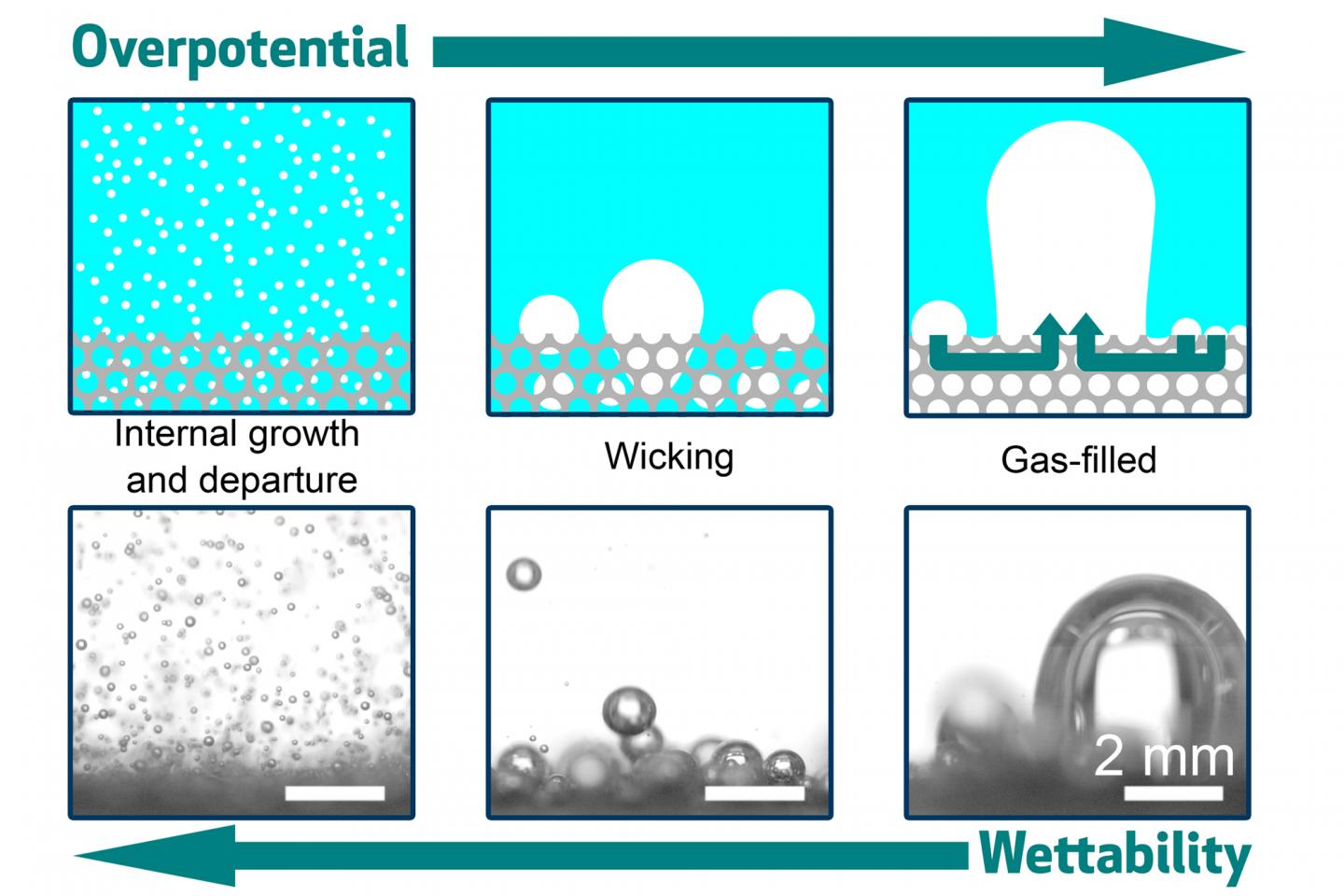
Wet wastes from sewage treatment and discarded food can provide the raw materials for an innovative process called hydrothermal liquefaction, which converts and concentrates carbon-containing molecules into a liquid biocrude. This biocrude then undergoes a hydrotreating process to produce bio-derived fuels for transportation.

This image shows the interplay among electrode wettability, porous structure, and overpotential. With the decrease of wettability (moving left to right), the gas-evolving electrode transitions from an internal growth and departure mode to a gas-filled mode, associated with a drastic change of bubble behaviors and significant increase of overpotential.

Click image to enlarge
Figure 1: Smartphone screen-size and battery capacity has increased over 3x in 10 years. As new platforms have been released with faster charging rates, OEMs have moved to adopt gallium nitride (GaN) chargers for both accessory and ‘in-box’ options. Source: GSMArena, Navitas as of January 2021